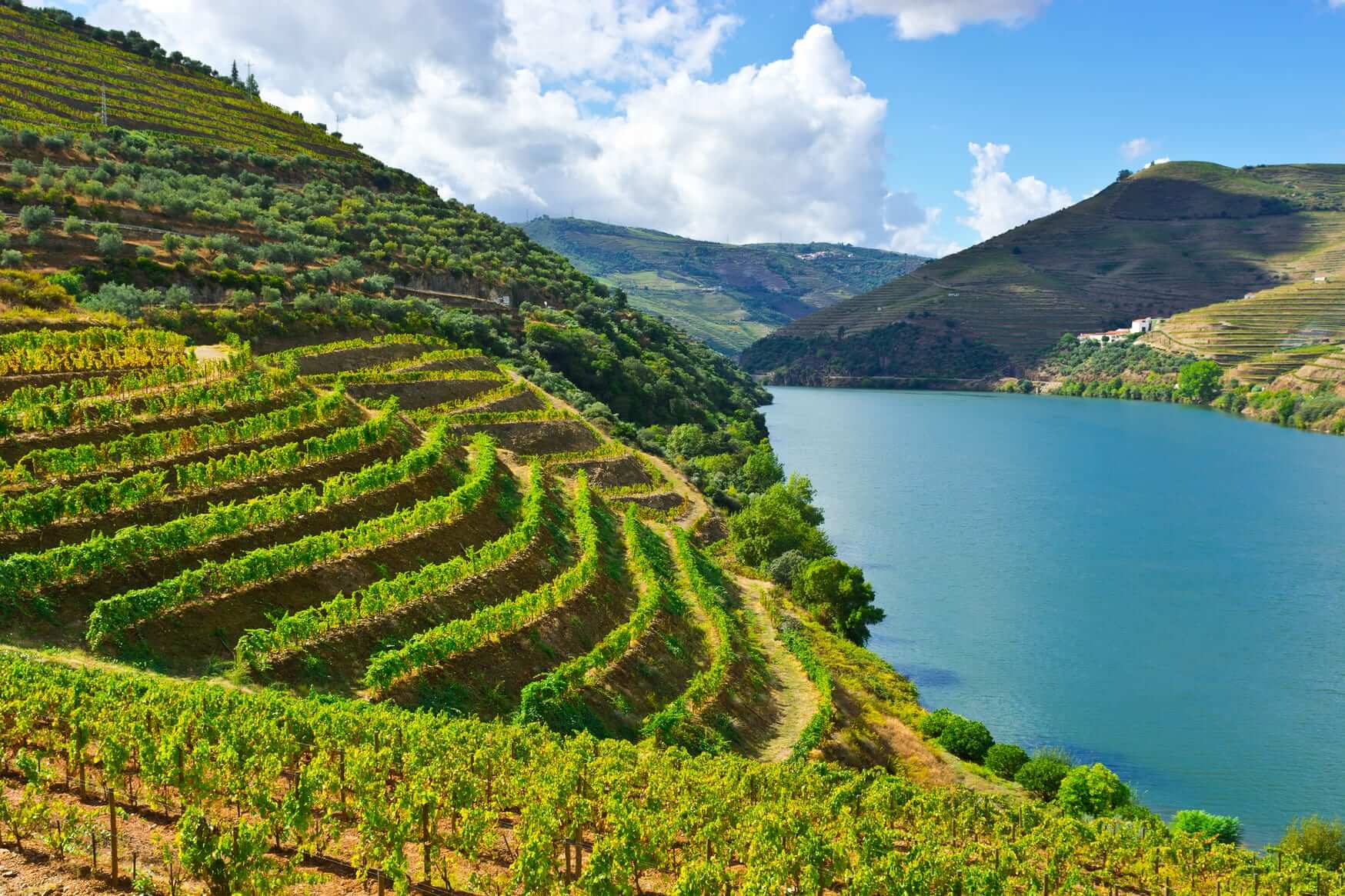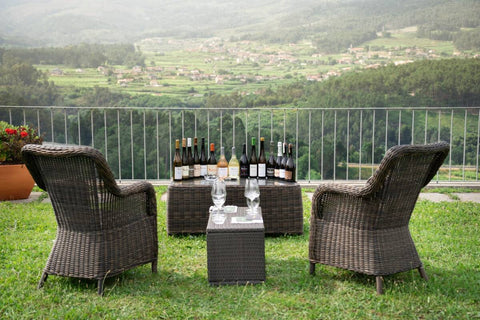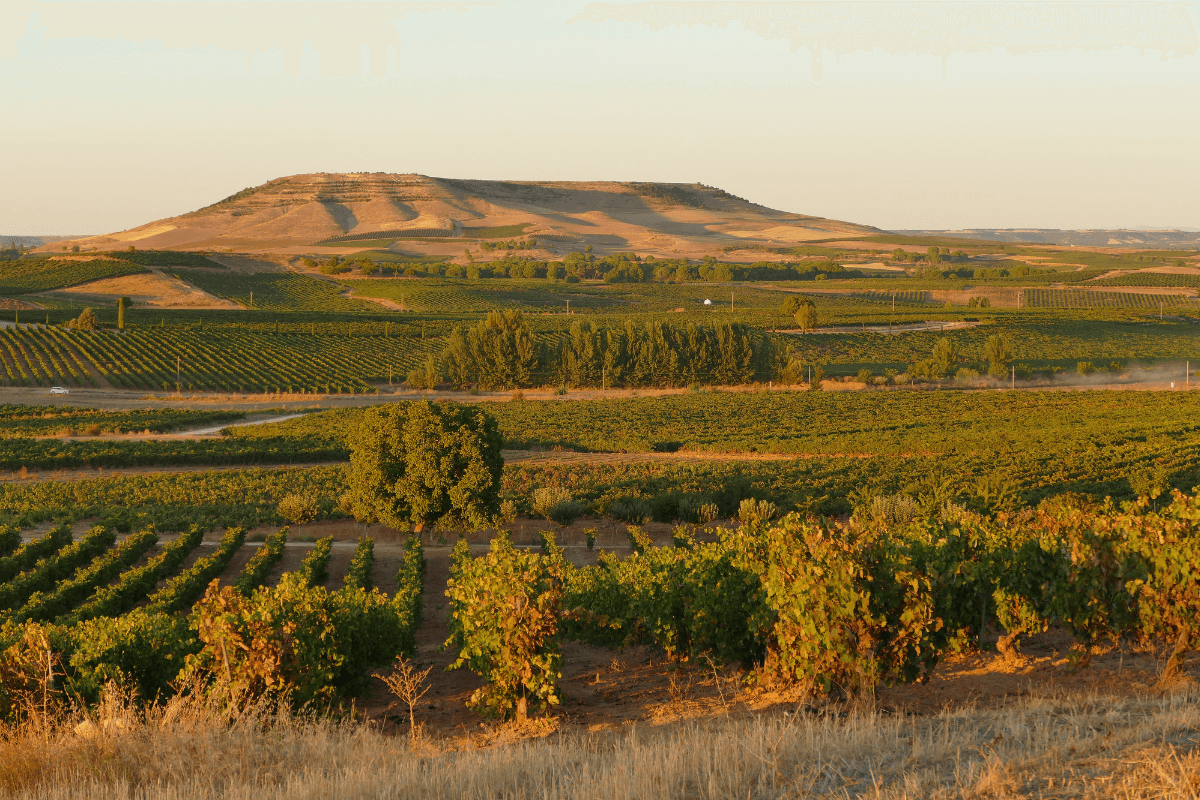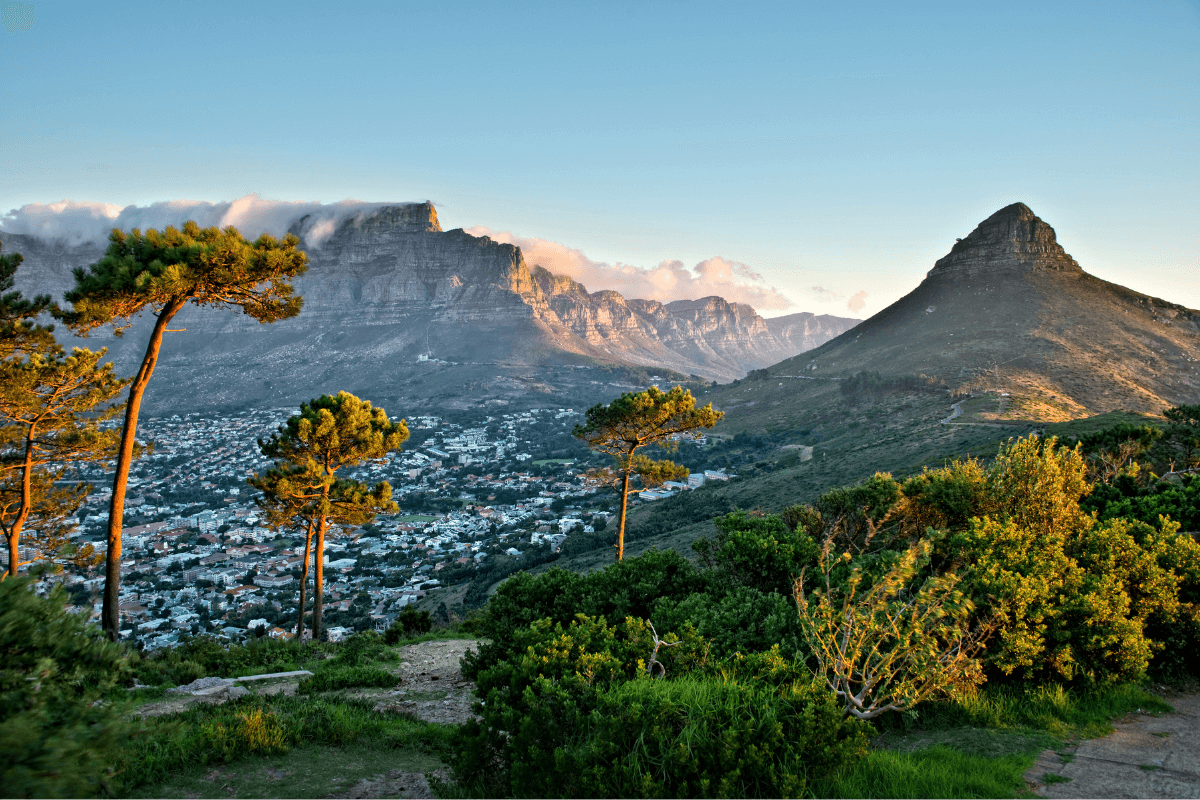
Vinho Verde hugs the northwest corner of Portugal, bordered by the Atlantic and the Minho River to the north – effectively the border with Spain. The mighty Minho estuary between the town of La Guarda on the Spanish side and Caminha on the Portuguese side takes a good 15 minutes to cross. The local ferry, bound by the tides, will charge you 4 euros each way for your car and all your passengers included. It pays to remember the time difference if you’re booking lunch in one of Caminha’s pretty restaurants – Portugal runs on British time. It’s not a commute I’d fancy – getting to work before you leave and getting home an hour late every day. I’d be permanently confused.
Vinho Verde is the wine region we all know and associate with cheap, light, slightly spritzy off-dry white wine – perfect for picnics, the beach and the garden. And it does this really well – so it may come as a surprise to learn that the region produced mostly red wine until the 1970s. Grapes grew amid plots of fruit and vegetables and grazing cows. Since those days both the quality and range of its wines has improved beyond measure and 83% of production is now white.
Of the 9 sub-regions, two stand out for quality: Monção e Melgaço in the north eastern corner for Alvarinho wines and Lima below for Loureiro wines.
Monção e Melgaço and Alvarinho
The twin villages of Monção and Melgaço have been known for Alvarinho wines since the 1930s. This tiny region is warmer and slightly drier by virtue of its distance from the Atlantic. Here the Minho is more like a wide stream bubbling over chunks of granite on the riverbed. Vines tumble down the gentle slopes - across the river from the Spanish region of Condado do Tea – one of the sub zones of Rías Baixas.
Adega Soalheiro first planted here in 1974. They make only Alvarinho wines – and for me no one does it better in Portugal.
The view from Soalheiro’s terrace across the Minho to Condado do Tea in Spain
The climate here is protected by mountains and less influenced by the Atlantic – morning brings sea mists but by midday there’s full sun. The winery’s name “Soalheiro” derives from the sunshine in this spot. Nights are cooler, allowing longer ripening, favouring Alvarinho’s lovely aromatics and conserving freshness. The grapes are usually fully ripe at a modest 12.5%. The soils here are sandy decomposed granite – well drained and adding a delicious mineral kick to the wines. Alvarinho grapes are very small so there’s a lot of skin relative to juice, helping flavour concentration.
Soalheiro’s wines are bone dry, wonderfully concentrated and perfectly balanced. Winemaking here is precise and accomplished.

Alvarinho grape
Wines to try:
Try this instead of Spanish Albariño or Sauvignon Blanc for its lovely ripe citrus freshness, concentration, elegant, gentle texture and long mineral finish.
Try this for even more concentration and depth – made from the estate’s oldest vines with 15% fermented in old barrels and a small percentage aged in old wood too. With its slightly riper flavours it’s the definitive wine for seared scallops – and is always part of my Christmas lunch – or indeed any other occasion when there’s shellfish on our table.
Lima and Loureiro
The Lima sub-region is the wettest in Vinho Verde – and home to the best examples of the Loureiro Grape.

Quinta do Ameal vineyards
Quinta do Ameal is the most famous maker of Loureiro. The Estate was founded in 1710 and bought just 2 years ago by Herdade Esporão in Alentejo. Owned by David Baverstock who arrived in Portugal in the early 1980s, Esporão became a pioneer estate in the region and remains so to this day.
Loureiro is well suited to cooler coastal areas. It gives wines a distinctively refreshing herbaceous and floral lift, light in body with crisp citrus and lime notes and it can also age well.

Loureiro grape
Wines to try:
Light but remarkably vibrant and concentrated with pure fruit, herbal and mineral notes – long, refreshing and dry. Try it as a change from Chablis or good Muscadet.
Made by the local coop founded in 1963, this too is 100% Loureiro based wine but made as a lighter, juicier and simple quaff – with just a bit of spritz and a hint of sweetness – the perfect deck chair glass for a warm afternoon.
So make this year the one where you start your travels in a glass – probably in an English garden for the time being but with a Portuguese wine in your glass as you sip and dream of the green slopes of the Vinho Verde region.
If and when you actually get there, both Soalheiro and Quinta do Ameal offer really good visits and you can actually stay at Ameal these days.




